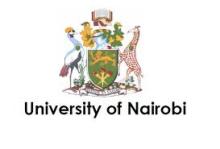Resource information
The Marsabit Forest Reserve (MFR), a green island in an arid environmental setting, generates multiple ecosystem goods and services (ES) to the local community critical for their livelihoods. The forest has been experiencing substantial land conversion for town expansion, agriculture production and settlements threatening long-term ES provision. Sustaining the forest ES under increasing anthropogenic pressures is one of the great challenges of the Marsabit forest community. We used focus group discussions in the thirteen locations around the forest and individual key informant's interviews in the identification of drivers of change and their potential impacts on ES in MFR. We used the scenario development process (SDP) in coming up with four divergent but plausible exploratory scenarios. The study established that the main ES provided by the forest was, water, fuelwood, forage (dry season grazing resource), medicinal plants and timber for construction. Stakeholders identified population pressure, unsustainable utilisation of forest resources, institutional barriers to effective resource management, land use and climate change as the main drivers impacting ES provision in the forest. Land use change and climate change were considered the most significant drivers yet the most uncertain in the future impacting ES provision in the MFR. The SDP identified four alternative future scenarios for the MFR by the year 2044 with the Marsabit we want scenario identified as the most desirable future for the sustainable supply of ES with adequate adaptation to observed changes. Stakeholders came up with a joint action plan implementation matrix for the identified scenario while mitigating the negative aspects of the alternative scenarios. The results support the need for participatory land use planning that takes into to account the growing threat of climate change to natural forest systems.


